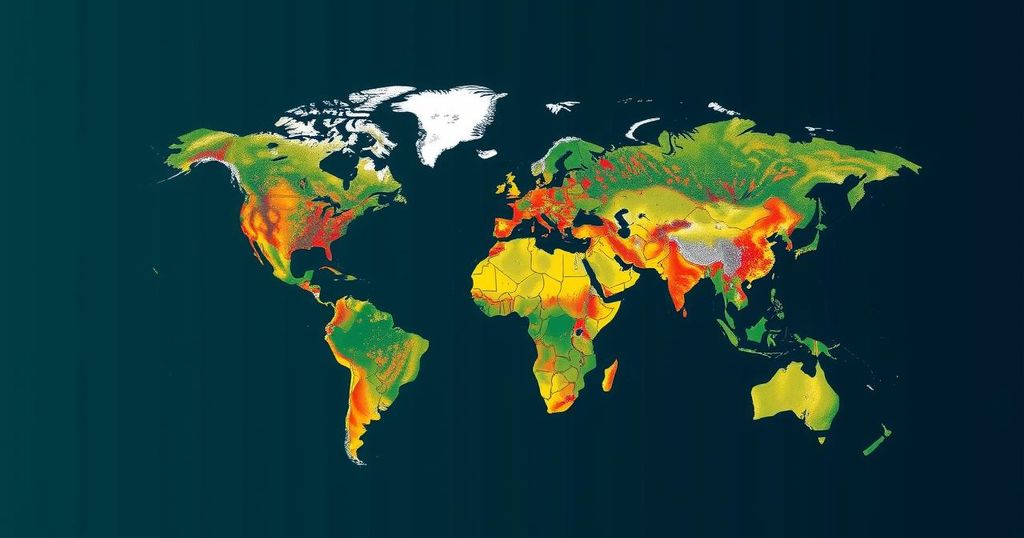The United Nations Environment Programme (UNEP) has urged countries to reduce greenhouse gas emissions by 42 percent by 2030 to mitigate climate change impacts. The Emissions Gap Report 2024 emphasizes the potential to stay within the 1.5 degrees Celsius limit set by the Paris Agreement through a transition to cleaner energy sources. Inger Andersen, UNEP’s Executive Director, highlighted the importance of these actions in preventing catastrophic climatic events. The report also noted a record high of 57.1 gigatons of carbon dioxide emissions and identified renewable energy technologies as key components for emissions reduction.
The United Nations Environment Programme (UNEP) has issued a call for countries to close the significant emissions gap highlighted in their recent Emissions Gap Report 2024 titled “No More Hot Air…Please.” The UNEP emphasizes the urgent need for nations to collectively reduce annual greenhouse gas emissions by 42 percent by the year 2030 to mitigate the adverse effects of global warming. According to the report, it remains feasible to limit the increase in global temperatures to within 1.5 degrees Celsius—a target set forth in the Paris Agreement—if there is a committed transition toward cleaner energy sources and habitat restoration initiatives. Inger Andersen, Executive Director of UNEP, remarked on the dire consequences associated with climate change, stating that fulfilling carbon reduction commitments is crucial for avoiding catastrophic events, including severe floods, prolonged droughts, cyclones, and wildfires. She emphasized, “Every fraction of a degree avoided counts in terms of lives saved, economies protected, damages avoided, biodiversity conserved and the ability to rapidly bring down any temperature overshoot.” This report is being presented ahead of the upcoming UN Climate Change Conference to be held in Baku in November. It reported a record high in greenhouse gas emissions, which reached 57.1 gigatons of carbon dioxide since 2019. The potential of renewable energy technologies, such as wind and solar power, combined, could facilitate a significant portion of greenhouse gas reductions—27 percent by 2030 and 38 percent by 2035. Moreover, initiatives to halt deforestation and promote sustainability in the transportation, building, and industrial sectors are identified as essential measures towards achieving the established carbon neutrality goals.
The Emissions Gap Report serves as a critical indicator of the disparity between the commitments made by countries to reduce carbon emissions and the actual trajectory of greenhouse gas emissions. With climate change posing an existential threat, the UNEP highlights the pressing need for governments to adhere to their pledges made under international treaties such as the Paris Agreement. The report underlines that the swift adoption of cleaner energy technology and robust protective measures for the environment are vital to avert drastic climate impacts. The acknowledgment of record-high emissions underscores the urgency needed in policy reform across various sectors.
The UNEP’s call for immediate and significant action to close the emissions gap reflects a crucial recognition of the urgent need to combat climate change. By committing to substantial reductions in greenhouse gas emissions and shifting towards sustainable energy solutions, nations can collectively mitigate the adverse effects associated with global warming. With the looming climate conference in Baku, the insights from the Emissions Gap Report serve as both a warning and a guide for the necessary actions needed to ensure a livable planet for future generations.
Original Source: www.socialnews.xyz






